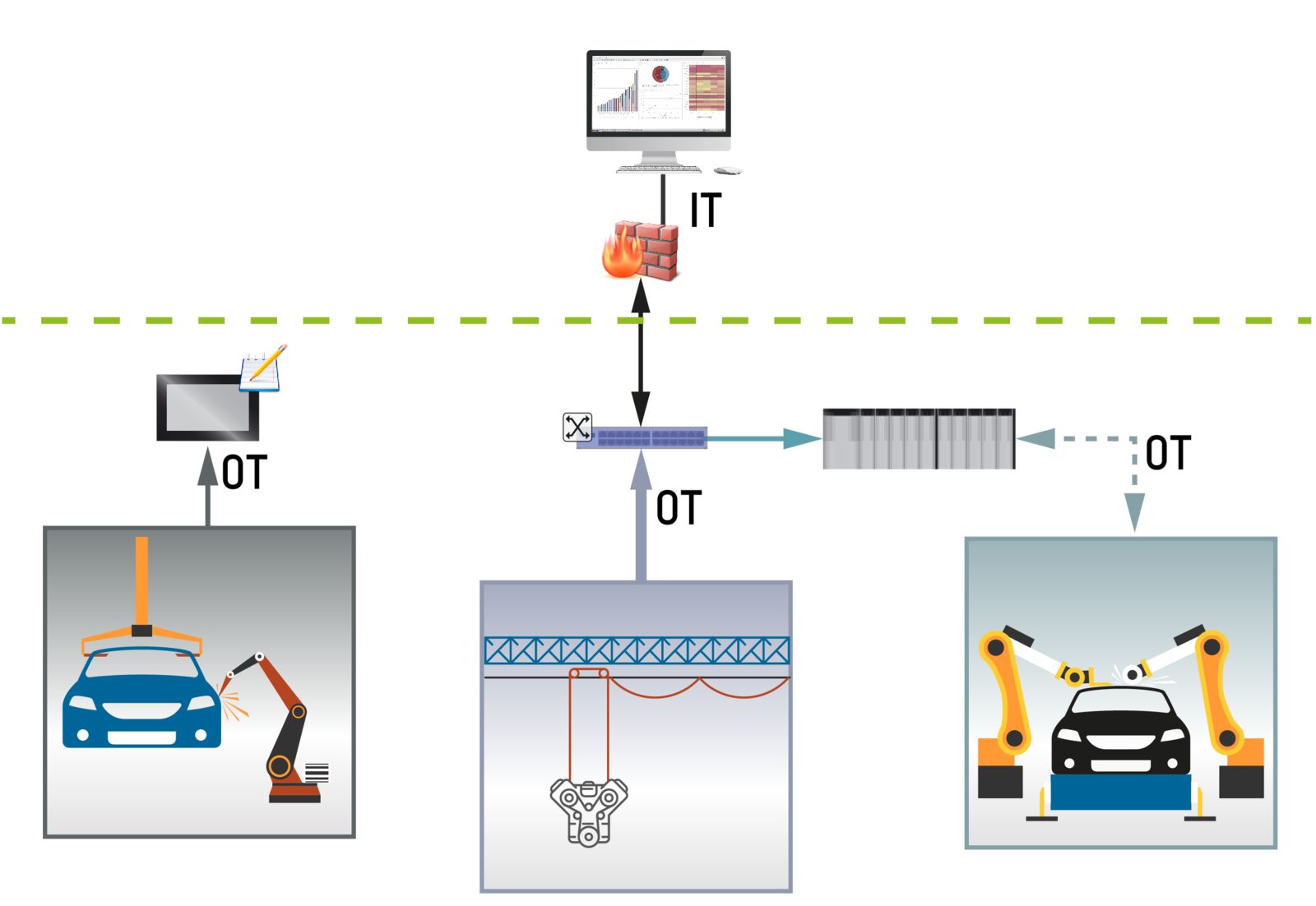The automotive production sector is regarded as a pioneer in the implementation of highly automated processes and modern manufacturing strategies. A closer look, however, reveals that this only applies to individual sections of the plant. What's missing is a uniform network that would allow manufacturers to efficiently monitor and control the overall production process. That is exactly what OPC UA TSN is now set to change.


For years, car bodies have been welded together by highly synchronized robots on fully automated production lines – the only job remaining for humans is to monitor whether all the machines are working correctly. "What appears to be a prime example of futuristic production, however, has one weakness," says Uwe Siebert, key account manager at B&R. Between the individual production steps, there is no uniform communication technology. Instead, data can only be exchanged via specially programmed interfaces. "There is neither uniform production control nor shared data resources."

Uwe Siebert, key account manager at B&R
Digital connectivity
In many cases, each section of the plant has not only its own control system but a separate IT infrastructure as well. "Configuring and administrating such a large number of networks is costly and time consuming," says B&R's technology manager for open automation, Stefan Bina. Communication between these isolated islands is only possible via specially programmed gateways. "A lot of resources are wasted here." While the processes and procedures within a given section of the plant are highly optimized and automated, there is only a marginal amount of interaction between the individual production steps.
"A uniform network is a first step towards digitally connected manufacturing," adds Bina. Achieving this requires communication technology that is understood by all devices and components, regardless of manufacturer. That includes not only entire machines and lines, but also individual sensors and actuators as well as higher-level systems such as MES, SCADA and ERP systems.
Vendor-independent communication
"The demands on such communication technology are high," emphasizes Bina. The technology must permit real-time axis synchronization, for example. It must also be vendor neutral and feature integrated security mechanisms to transfer data to the cloud.
"OPC UA TSN will be a huge step forward for the automotive industry," Siebert is convinced. Not only will it enable real-time communication between the various sections of a plant, it will also make communication with higher-level systems faster, more efficient and more consistent. In turn, production planning can become much more precise and react to bottlenecks in real time. Historical data is also available, which can be viewed at any time by financial controllers or management.

Stefan Bina, Technology Manager - Open Automation, B&R
Analyzing large volumes of data
"OPC UA TSN enables large volumes of data to be collected and analyzed – for example on an edge controller or in the cloud," says Bina. The prepared data can be used to optimize manufacturing processes. It's all made possible by the information models of OPC UA. "The protocol doesn't just transport dimensionless data," explains Bina. Instead, each variable value can be accompanied by additional information, such as units, limits and a description. "This greatly facilitates communication and data processing throughout multi-vendor systems," emphasizes Bina. Devices from different manufacturers can communicate with each other in one system without having to program any gateways or interfaces.
Costs sink radically with only a single network to manage, configure and administer. "You no longer need ten different specialists for ten different protocols," stresses Bina. "Together with numerous other automation and IT companies, we are currently working on mechanisms that will soon enable OPC UA TSN networks to configure themselves. Diagnostics will also be much easier compared to today's networks."

The connected value chain
"The benefits of OPC UA TSN do not end in the production hall," emphasizes Bina. The entire value chain can be better networked. When you're able to evaluate production data in real time, collaboration with suppliers can be scheduled with greater precision and a higher degree of automation. The after-sales area can also be integrated even more tightly.
"OPC UA TSN is a great opportunity for the automotive industry," summarizes Siebert. With uniform communication technology, automobile manufacturers will be able to make their production lines far more efficient than ever before. Productivity and profitability will follow hand in hand.
Author: Stefan Hensel, Corporate Communications Editor, B&R
The evolution of OPC UA TSN
In order for OPC UA TSN to meet industrial requirements, three important extensions to existing standards have been launched in recent years:
- The addition of a publish/subscribe model: OPC UA has been working with a client/server mechanism. A client requests information and receives a response from a server. This system has its limitations in cases when there are many nodes on the network. The publish-subscribe model, in contrast, enables one-to-many and many-to-many communication. A server sends its data to the network (publish) and every client can receive this data (subscribe).
- The Time-Sensitive Networking (TSN) extension promises improvement. TSN refers to a set of sub-standards under the IEEE 802.1 family of Ethernet standards. It adds real-time capability to data transmission via standard Ethernet.
- The establishment of an automatic configuration mechanism for OPC UA TSN: Even large and dynamic networks with OPC UA TSN will soon configure themselves automatically.
Specification work for a large portion of the necessary developments has now been completed. Interaction between the technologies is now being optimized in multi-vendor testbeds and the first OPC UA TSN enabled prototypes are being tested.